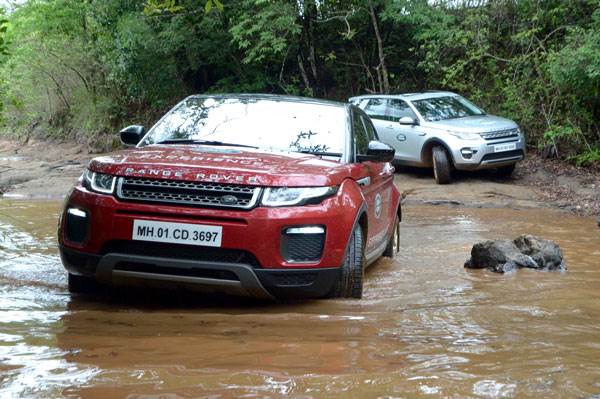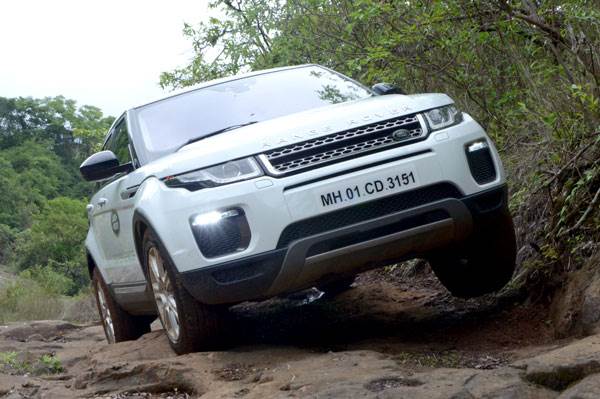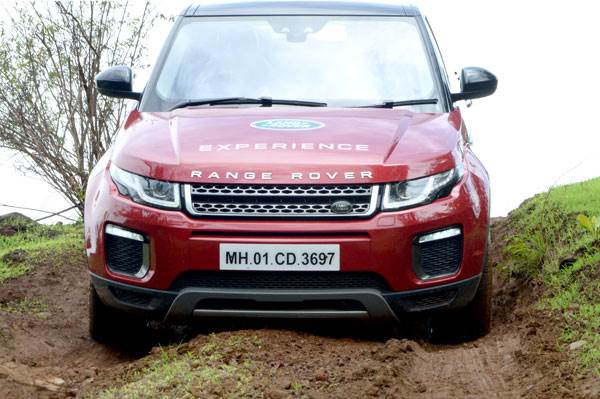That Land Rovers are very capable off-road is a commonplace fact. The company, however, does not want us to forget it, and to that end, they invited us for yet another Land Rover Experience in Aamby Valley. This time around, we got the Range Rover Evoque, and a wet, runny off-road trail to play with it in.
The Range Rover Evoque is the smallest of the mighty Range Rovers, and while it was designed with a more urban clientele in mind, the blood of the Rangie runs hot through its veins. It comes equipped with Land Rover’s famed Terrain Response system, which offers the driver four driving modes to suit the terrain the car is being driven on. You get normal, grass-gravel-snow, mud-and-ruts and sand. Each driving modes alters and adjusts a range of aspects of the car, such as the weight of the steering, the gear responses, the throttle responses, the suspension and the time and nature of power delivery. The Terrain Response system also gets dynamic stability control and electronic damper control. The impressive bit is that the moment you change modes, the changes in the behaviour of the vehicle are perceptible.
Our trail, on account of recent rains, was primed for poor traction. We started with the Evoque is Grass-Gravel-Snow mode to prep it for extremely slippery surfaces. Through mucky trenches and over slippery rocks, the Evoque trudged on fairly well. On steep declines, we activated the hill descent control, which, very ably, took the car down, irrespective of how daunting the task seemed. We waded through deep river crossings, successfully, and even ventured off the trails to drive over terrain I would usually not subject a car too.
Apart from the clever Terrain Response System, the Evoque gets a host of other features that make it capable off the tarmac. It boasts of 500mm water wading ability (which we tested), high ground clearance, a short wheelbase, a nine-speed gearbox with the first gear specifically designed for off-roading and steep approach and departure angles. A handy feature is a graphic on the infotainment screen and the instrument cluster that indicates the steering angles of your wheel, so you know exactly where you will head when you climb over that boulder.
After nearly an hour of mud-sloshing and boulder-scaling, we were done. This was just an experience, not a proper test, but it did manage to give me a glimpse of the ‘go anywhere’ ability Range Rovers, big and small, are so commonly associated with.





Comments
Member Login
Personal Details
No comments yet. Be the first to comment.